Stay in the Zone: Exploring the Top Waterproof Heart Rate Monitors for Precision Training When Swimming
 Karen Parnell
June 28, 2023
Karen Parnell
June 28, 2023
The Best Heart Rate Monitors for Swimming
As a swimmer or triathlete you have probably been a bit frustrated with your watch-based heart rate monitor – that is it simply does not work – and RPE (Rate of Perceived Exertion) may not be getting you consistently in the right zone. If you can monitor and record your heart rate you will be able to know you are following you session whether they be recovery, endurance, sprints, power, or threshold sessions.
A few years ago, Finis came out with the Aquapulse Heart Rate Monitor, but it has been discontinued. When reviewed by DC Rainmaker he said it was easy to use but did not record data and did not float so maybe not the best design. Finis did produce an MP3 player with a similar form factor but unfortunate did not include the heart rate monitor function so one has to assume they have shelved the HRM products.
So, faced with this are there any solutions out there that you can use to monitor your heart rate and be more scientific about your swim training? Fortunately, yes.
In this Blog we will look at the best products on the market to monitor and record your heart rate during your swim sets. I will split this into two types of products, one that captures the heart rate during your swim and can view the recorded data after and devices that you can use during your swim so you can train with heart rate.
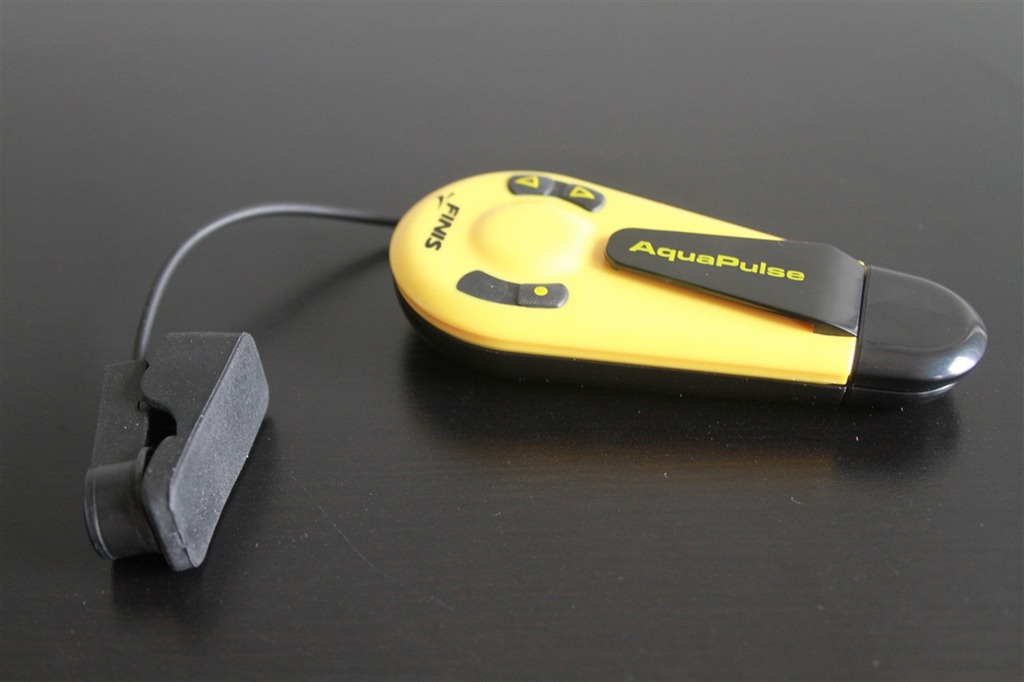
The Finis Aquapulse Heart Rate Monitor now discontinued Photo: DC Rainmaker
Get your FREE swimming workouts and tips book here.
Get your FREE Swim Workouts for Triathletes E-book
Why train with a heart rate monitor in your swimming sessions?
You know you are working in the right zone to achieve the right physical adaptions. You may see “easy” “moderate” “build” “fast” or “strong” on your plan but what does that actually mean? Are you actually changing pace? Or do you have just two speeds – fast and slow? Heart Rate will let you know what zone you are in ad how hard you are working.
Heart Rate monitoring will help you keep in the training zone on your plan. This is useful during base or recovery sessions when you need to let your body recover and not go too hard (even if the person in the next lane is showing off and you know you can beat them!). On the flip side if you are doing a power or speed session you will know if you are not working hard enough.
Heart Rate is a great way to assess your performance progression. Over time gathering this data will enable you to see your can swim at a fast pace but will a lower heart rate. Tracking heart rate in swimming can be used in a similar way to the way you do for running and cycling.
Why measuring Heart Rate in Water whilst Swimming is not Easy
When you are running and cycling monitoring your heart rate is simple and you probably do this with a smart watch. It’s likely that you will have the Heart Rate Monitor (HRM) built into your watch and when you take it off you will see flashing green lights when you take it off. This is an optical heart rate sensor. An optical heart rate monitor (HRM) uses LED lights to shine through your skin and measure the changes in blood flow. Sensors in the HRM detect how much light is absorbed and calculate your heart rate based on those measurements. The HRM displays your heart rate on the device or sends it to another device for tracking. These types of heart rate monitor tend not to be as accurate as chest straps which are Electrocardiogram (ECG) based.
Unfortunately, both types of HRM don’t play well with water. Water tends to get in between your wrist or chest and your sensor and slides around making the data unreliable. The chest straps are designed to use with ANT+ or Bluetooth to transmit data to a smart watch and in water this is not possible.
The Journal of the American Medical Association, in their own research, found that the wrist-strapped wearables they tested weren’t able to produce a reliable heart reading during moderate exercise.
If measuring and target heart rate zones is a key part of your training program, a chest-strapped heart rate monitor may be your preference and give the most accurate results.
We will now look at how some electronic sports product brands have cracked this HRM issue both on your wrist, chest, and temple!
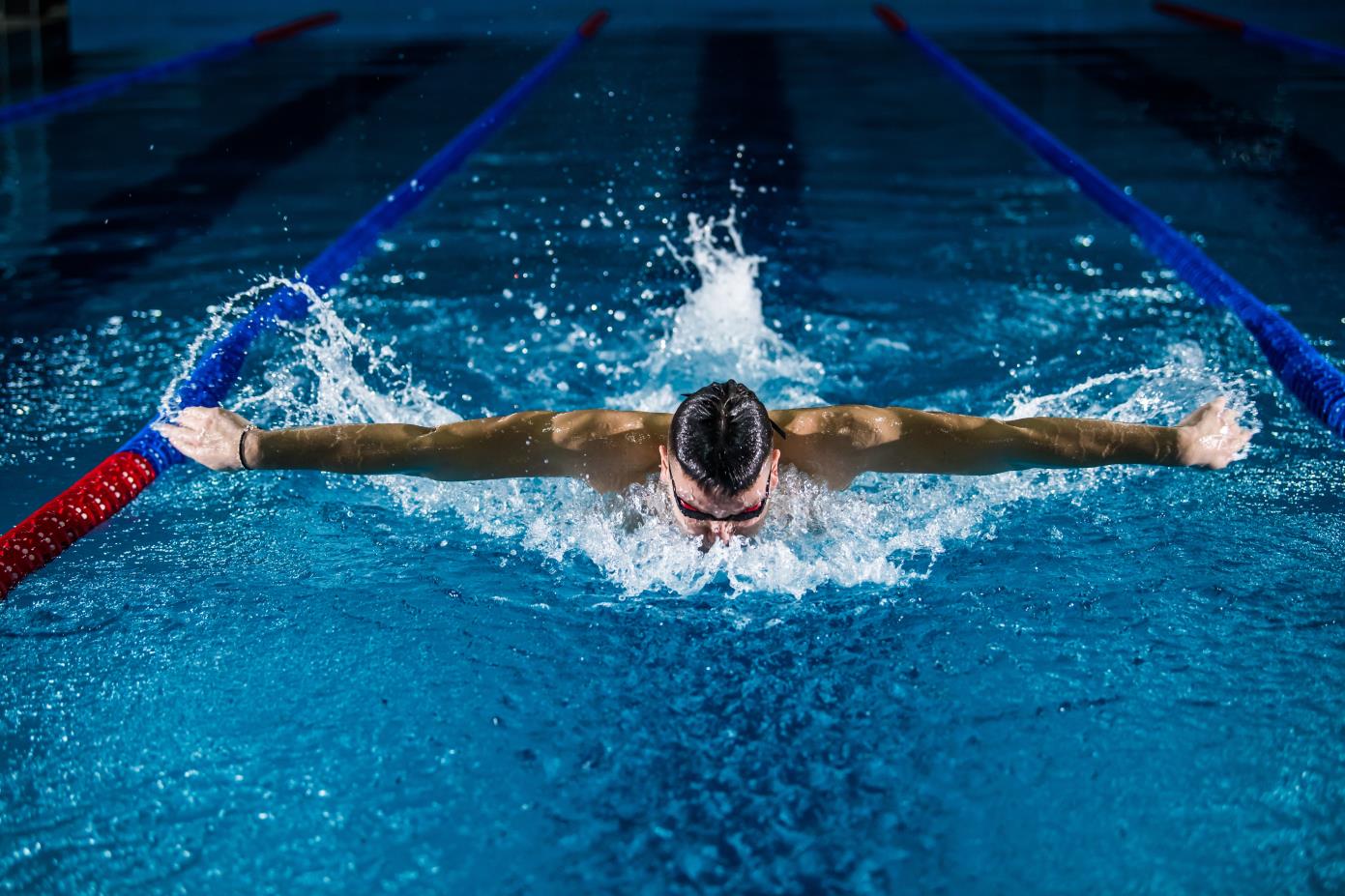
Get your FREE swimming workouts and tips book here.
The Best Heart Rate Monitors for Swimmers
As you can see monitoring and/or recording hear rate data in the water can be tricky, so manufacturers have had to be inventive.
Here is a list of the current best solutions to this issue and includes what I use for monitoring my heart rate when swimming.
1. Polar Verity Sense Optical Heart Rate Sensor
The Polar Verity Sense straddles both categories as it can record your swim stats including heart rate for viewing after your swim in “swim mode” plus if used with FORM Smart Goggles can be used to view your heart rate during your swim. This is why for me it is my favourite device for heart rate when swimming.
The video below details how to put the Verity Sense into swim mode so you can record heart rate, distance, and pace.
How to use the Polar Verity Sense in Swimming Mode
Get your FREE swimming workouts and tips book here.
Get your FREE Open Water Swimming Sessions E-Book
Sync your training data to the Flow app and web service to view the details of your session. The Flow app shows a detailed summary of your session including your heart rate, distance, and pace. If necessary, you can change the pool length setting from the training analysis view, and the swimming metrics will be updated accordingly.
The Verity Sense comes with a special clip which allows you to clip it to your goggle straps and take a heart rate reading from your temple. Taking a reading from this area is more comfortable, tends to be dryer and more reliable. Chest strap type monitors tend to be uncomfortable and can slip around and make the data a bit more unreliable.
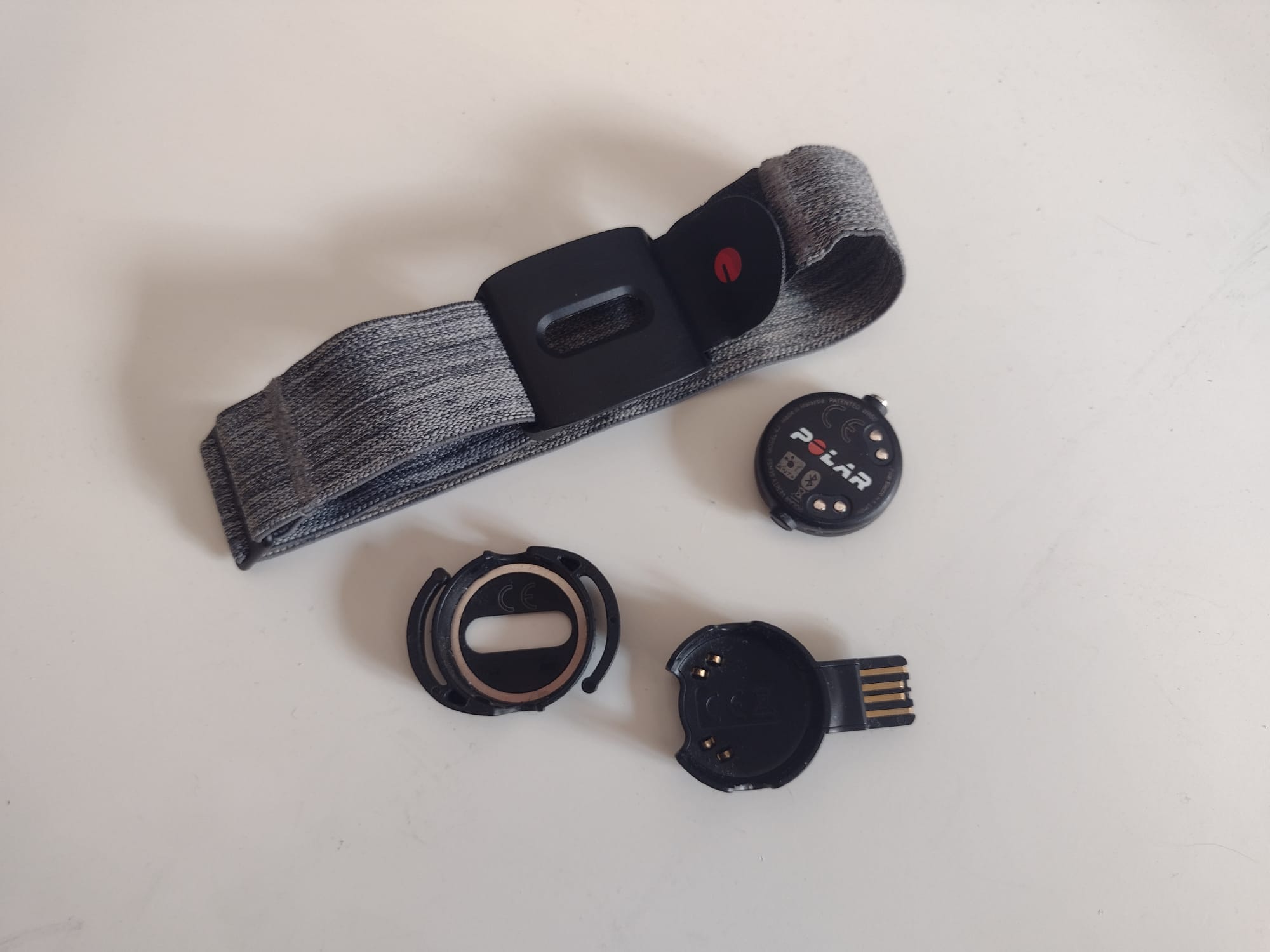
My Polar Verity Sense with arm strap, USB charger and goggle strap clip
Get your FREE swimming workouts and tips book here.
You can wear the Verity Sense without a smart watch that some swimmers find can be bulky and throw out their swim stroke balance.
The main drawback of this setup, obviously, is that you cannot see your heart rate to know if you are in the proper heart rate training zone while you are swimming without smart swim goggles or having your smartphone parked at the end of the lane.
Used on its own, the Polar Verity Sense is more of a recording tool than a monitoring tool in the water. It records heart rate, distance and pace automatically in swimming pool with the specific swimming mode which you can view after. Another great feature is that it is rechargeable via a provided USB charging cradle.
If you want to see your HR while swimming with the Verity Sense, you can pair it with a set of smart swim goggles, such as the FORM Swim Goggles.
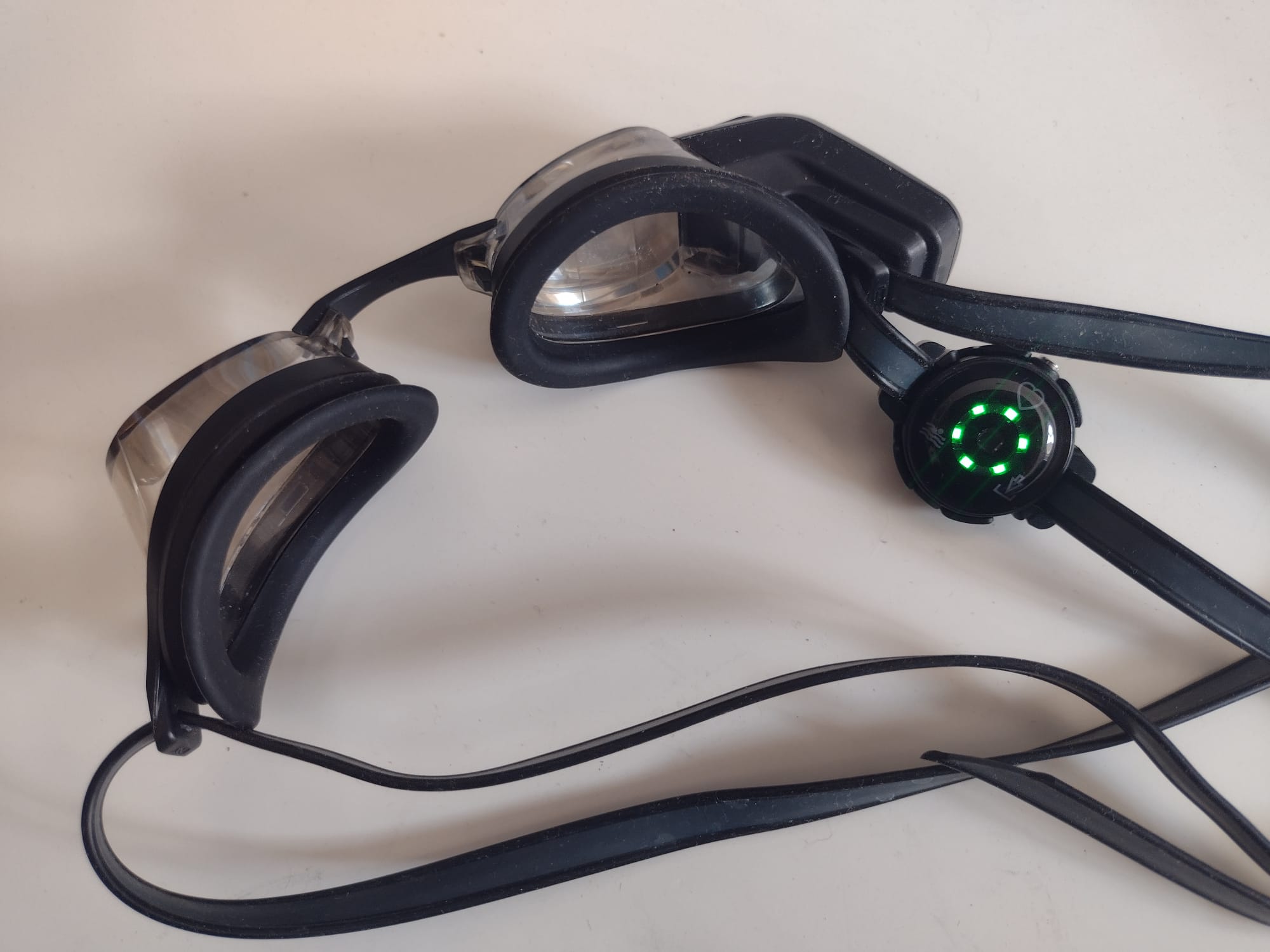
Polar Verity Sense on the FORM smart goggles
Get your FREE swimming workouts and tips book here.
Get your FREE Open Water Swimming Sessions E-Book
Connecting the goggles allows you to view HR on the heads-up display on the FORM goggles as well as other data such as time, distance, pace, stroke rate, stroke count, DPS and more.
It also comes with an arm strap so you can use when running, cycling, at the gym etc.
Pros
Lightweight and waterproof.
Has a specific clip for goggles.
Low cost.
Can be used with FORM goggles to see during your swim.
Can be used on your arm for other sports and activities.
The Polar Flow App is easy to use.
Cons
You can’t see your heart rate during your swim unless you use with FORM smart goggles.
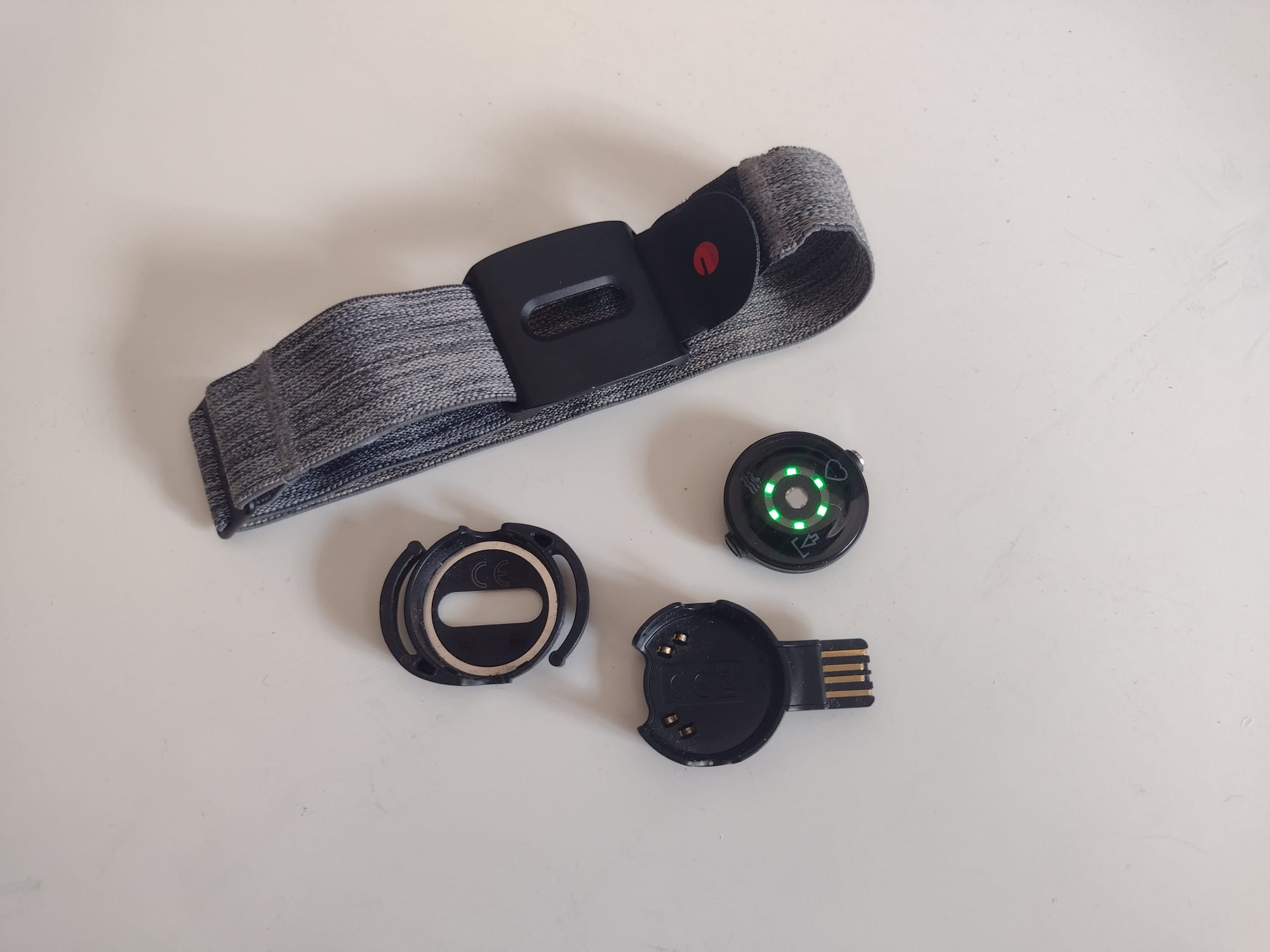
Get your FREE swimming workouts and tips book here.
£70.48 on Amazon
FORM Smart Goggles with 1 year membership
£249 on Amazon
Verdict Best Swimming Heart Rate Recorder and In-Swim Monitor (with FORM)
Note: We earn a commission if you make a purchase on Amazon, at no additional cost to you.
2. Garmin HRM-Pro Plus
Garmin has produced many HRM’s over the years such as the HRM-Swim and HRM-Tri but these appear to have been consolidated into the Garmin HRM-Pro Plus.
This means that it has features for swimmers, runners, and cyclists with no focus on swimming. The main new feature is the “no tool” battery change compartment. In the past you had to remove four screws to change the button battery which some swimmers complained made it less waterproof. With the new compartment you just remove the outer case then twist the battery cover and remove and replace the battery then twist it shut. You then clip on the outer shell and it’s fully waterproof.
For swimmers this HRM is worn around your chest (under your wetsuit or swimsuit to secure it) and records your swim data during your swim so you can view after.
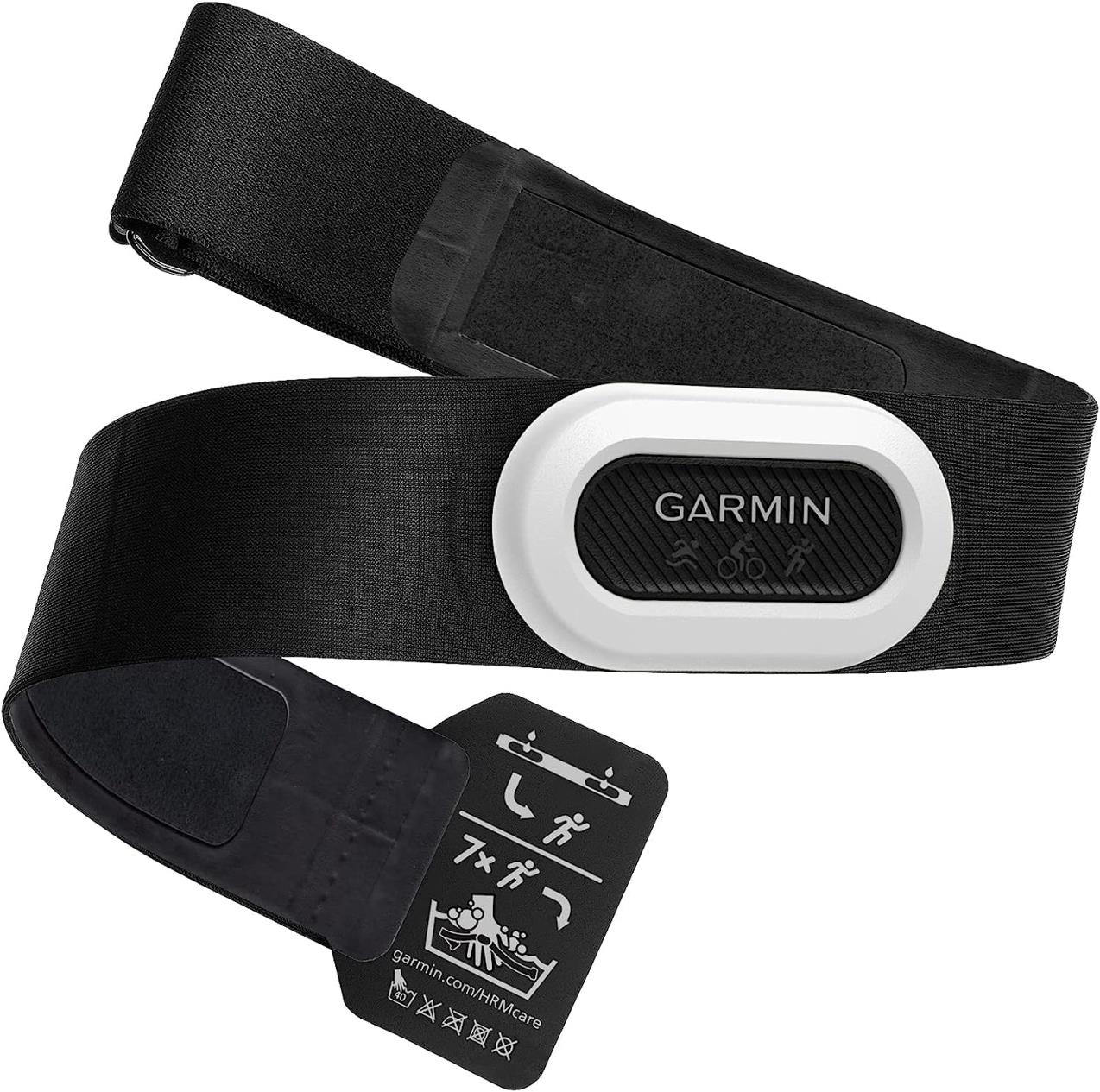
The Garmin HRM-Pro Plus
Get your FREE swimming workouts and tips book here.
You must start a timed activity on your paired Garmin device to view stored heart rate data later. During rest intervals when out of the water, the heart rate monitor sends your average and maximum heart rate for the previous interval, and your real-time heart rate, to your Garmin device.
NOTE: To record heart rate data while swimming, your HRM-Pro Plus must be paired to your compatible Garmin device using ANT+, rather than Bluetooth technology. Only some Garmin devices support heart rate data while swimming. For more information, see your owner's manual.
Your Garmin device automatically uploads stored heart rate data when you save your timed swim activity. Your heart rate monitor must be out of the water, active, and within range of the device (3 m) while data is uploaded. Your heart rate data can be reviewed in the device history and on your Garmin Connect account.
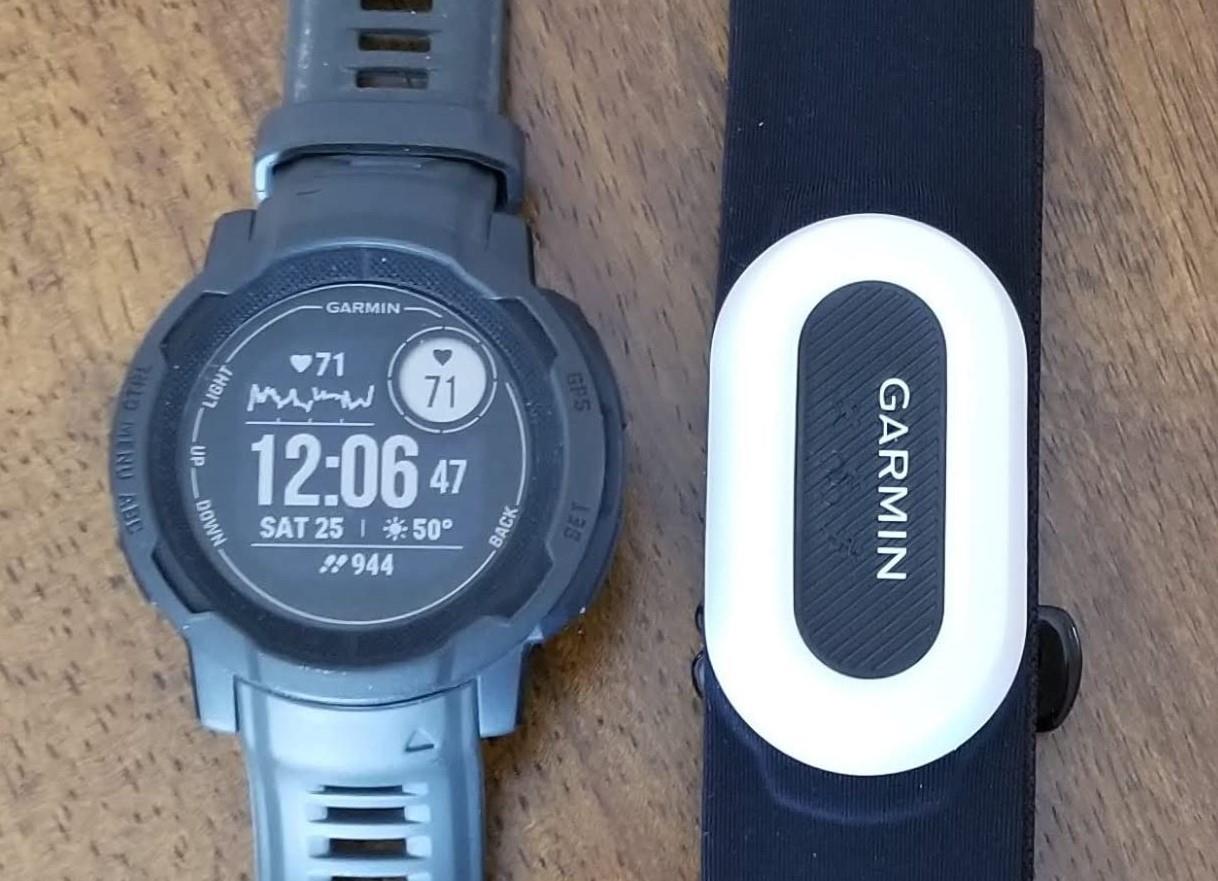
Garmin HRM-Pro Plus and Garmin Fenix Watch
Get your FREE swimming workouts and tips book here.
Get your FREE Open Water Swimming Sessions E-Book
The HRM-Pro Plus is designed primarily for open water swimming, but it can be used occasionally for pool swimming. The heart rate monitor should be worn under a swimsuit or triathlon top during pool swimming. Otherwise, it may slide down your chest when pushing off the pool wall.
Pros
Best for open water swimming under a wetsuit.
Cons
Expensive for swimmers with limited use during swimming.
Garmin state it was designed for open water swimming and not pool swimming – it can slip down your body during pool swimming.
You can only use ANT+ not Bluetooth when swimming.
The advanced features are aimed more at runners e.g., running power.
The strap itself is non-standard so you need to purchase Garmin straps not low-cost generic ones.
The strap is not designed for swimming like the HRM-Swim which it replaced so may slip when swimming in the pool.
£85.99 on Amazon
Verdict: A good HRM chest strap if you are already in the Gamin ecosystem and want and chest strap for training in open water and other sports especially running.
3. Polar Vantage V2 Mult-Sport Watch and H10 Waterproof Heart Rate Sensor
Did you know Polar developed the heart rate monitor in 1977 so know a thing or two about HRMs!
I’ve combined the Polar Vantage V2 watch with the Polar H10 as they are both excellent products and it depends on what you want to monitor and record when you swim.
First up is the Polar Vantage V2 which is a multi-sport watch aimed at swimmers and triathlete. The watch will measure your heart during your swim and show it on your watch display in real time. The only caveat is that you need to wear it “snuggly” on your wrist to get an accurate reading.
The watch will detect your swim stroke type and will show and record your stroke rate, swimming time, splits, distance, pace, SWOLF and heart rate. In open water you can see your pace, distance, route via GPS, and heart rate.
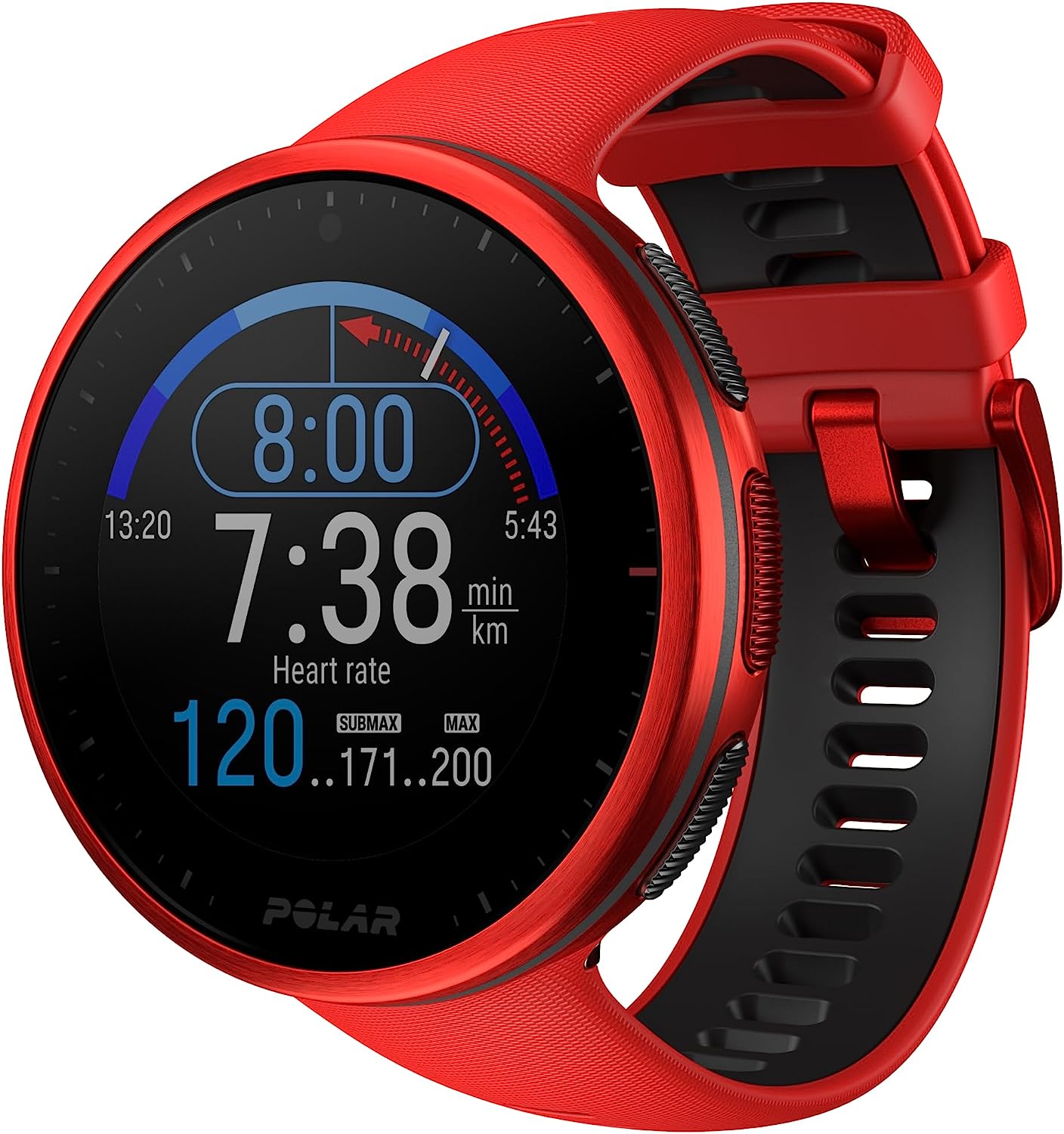
The Polar Vantage V2 Red
Get your FREE swimming workouts and tips book here.
With their latest HRM technology called the Precision Prime Sensor Polar appears to have cracked the wrist based HRM whilst swimming.
But if you are a belt and braces type person you could pair your watch with the H10 chest strap. This is a classic and trusted HRM from Polar and used by triathletes like Tim Dom. It is an extremely accurate heart rate monitor for all sports.
For the best results link the H10 with your Polar watch using their Gymlink wireless link rather than Bluetooth for accuracy. The chest strap is made of a soft textile, with silicone-framed electrodes dotted along it to get the most accurate measurement possible. (The silicone helps keep the electrodes from sliding while you are stroking along).
You can use the H10 without a Polar watch and record your swimming stats and review them after your swim using the Polar Beat App.
As a side note DC Rainmaker uses this as benchmark HRM for his product testing as it is very accurate plus it supports the 5kHz GymLink analog heart rate transmission for older gym equipment. I tested this out on my Domyos Elliptical machine and it worked perfectly.
I have also tested this with a Polar V800 watch swimming in the sea and using the 5KHz GymLink which can transmit 3 to 5 feet or around 1.5 metres versus just a few inches for the 2.4GHz Bluetooth and ANT+.
The trick is to not pair the V800 with the Polar H10 HRM but just allow them to connect using GymLink on dry land. It's worth switching off Bluetooth on your phone to stop it pairing with the H10 and forcing it to Bluetooth mode. Remember to check that you have enabled H10 GymLink option in the Polar Beat app settings as we know Bluetooth doesn't transmit data in the water. See in more detail HERE.
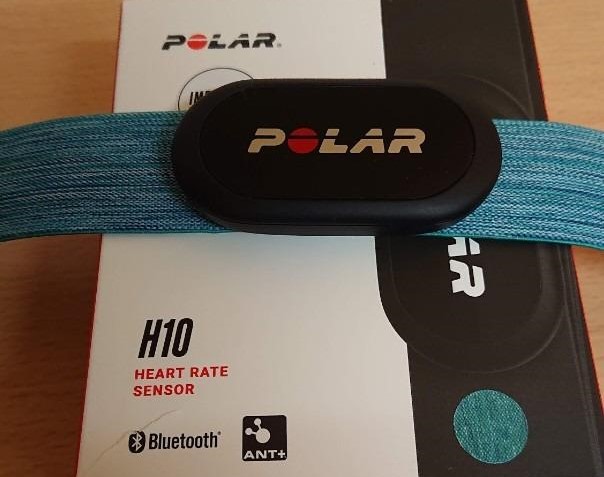
Polar H10 Premium Heart Rate Monitor
Get your FREE Open Water Swimming Sessions E-Book
Pros
The Vantage V2 can show you real time HR during your swim in the pool and open water
It can detect your stroke type.
It records lots of swim metrics you can view during and after your swim.
If you want even more accuracy across all sports or don’t want to use a Polar watch get the H10 HRM.
The Polar H10 includes the 5kHz GymLink to connect to equipment in gyms and can transmit data through water. This mans if you have an older Polar watch like the V800 you can see real time HR data as you swim.
Cons
The Vantage V2 is quite expensive if all you want is HR during swimming.
The H10 on it’s own will not show your HR during your swim just after swimming (unless you use Gymlink connection)
£345.55 on Amazon
£79.99 on Amazon
Verdict: Polar pride themselves on accurate heart rate monitoring and depending on your budget and the way you like to position you heart rate sensor you can find a Polar device for your needs. Polar Verity sense (temple), H10 (chest) and Polar Vantage V2 (wrist).
My Polar H10 Heart Rate Monitor Unboxing Video
Get your FREE swimming workouts and tips book here.
4. Garmin Swim 2 GPS Swimming Smartwatch
The Garmin Swim 2 has been designed for swimmers with modes for both pool and open water. When you are not swimming then it is a basic GPS smart watch. This means if you are a triathlete then you may be better off choosing a higher end watch like the Fenix 7 for swim, bike, run and S&C workout tracking.
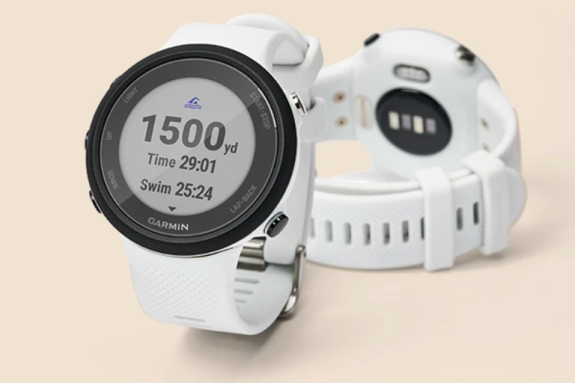
Garmin Swim 2 GPS Swimming Smartwatch
Get your FREE swimming workouts and tips book here.
The Garmin swim 2 will enable you to get underwater heart rate data without a chest strap. Check heart rate right on your wrist as you swim and during rests, and then analyse post-swim on the Garmin Connect app.
In pool swim mode dive into the water and start recording distance, pace, stroke count, stroke type and SWOLF; take advantage of advanced pool features, including auto rest.
For open water you can use the built-in GPS and train in lakes, oceans and rivers while recording distance, pace, stroke count, stroke rate, stroke distance and SWOLF.
If you use Critical Swim Speed (CSS) in your training, then this watch supports it to track your progress (CSS approximates your anaerobic threshold speed). So, this is a bit like training with power like your running and cycling.
This watch also tracks time and distance for drills such as kicking, one-arm swimming or sculling. It also has handy features like auto rest, pacing alerts (like you Tempo Trainer), performance monitoring plus you can create workouts in the Garmin App and send them to your phone to follow along with.
Pros
A swim specific watch with features such as CSS, pacing alerts, stroke rate, SWOLF and more
Not too pricey for a capable swim watch with HRM and some other basic smart watch features
Heart rate during and analysis after
Cons
If you need more than just swimming monitoring then it’s worth looking a the higher end watches.
£212.99 on amazon
Verdict: A capable swimmers watch with HRM support built in with some other basic smart watch features.
5. Apple Series 8 Watch
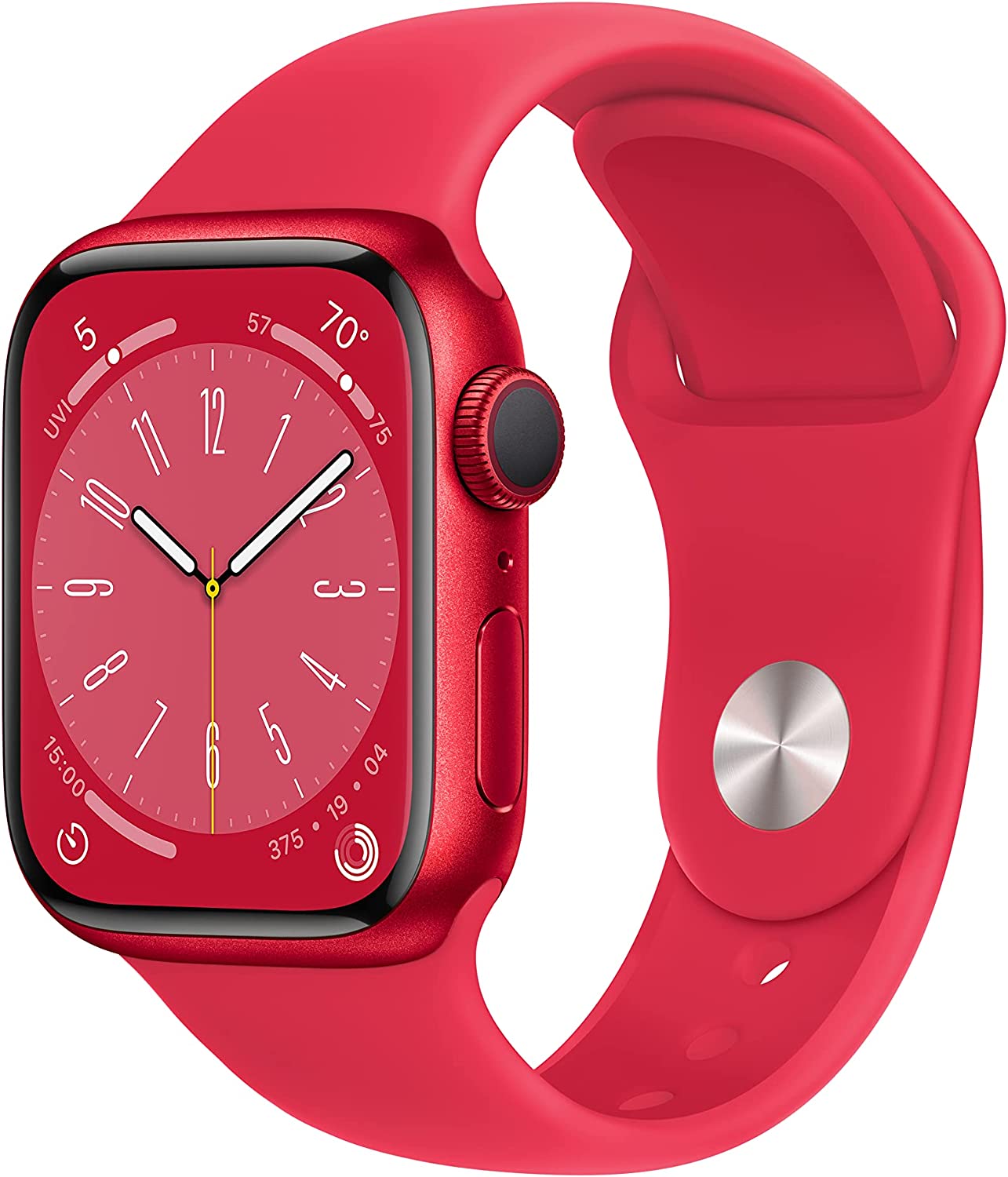
Apple Series 8 Watch
Get your FREE swimming workouts and tips book here.
Get your FREE Open Water Swimming Sessions E-Book
If you are a fan of Apple products, you can’t go wrong with an Apple watch and namely the Apple Series 8 watch. They have a clear focus on sports and health and have recently announced support for bike power (FTP) along side their running power and swimming support.
Apple watches have been water-resistant up to 50m since the second generation and they have been adding lots of features with the Apple series 8 aided by adding new sensors for blood oxygen, electrical heart sensor (ECG) (alongside the optical HR sensor) as well as Cycle Tracking with retrospective ovulation estimates.
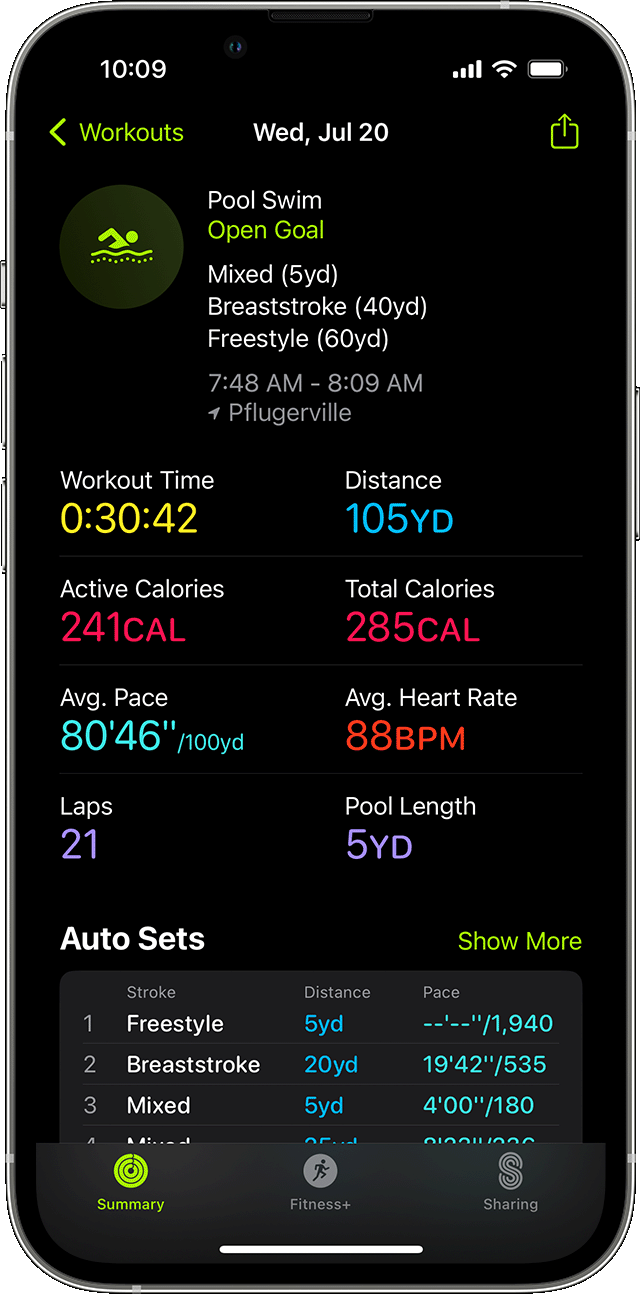
The Apple Watch is great for breaking down all of the details of your HR during your swim workout, including average heart rate and time spent in different aerobic and anaerobic zones and different swimming stroke types.
You can edit the watch dashboard to show the things you care about most like heart rate when swimming. This makes it easy to quickly glance at the watch face between laps to see what heart rate zone you are in and if you are hitting your targets.
To get the best from your Apple watch it’s best to rinse it after swimming to protect it from chlorine and salt.
Your Apple Watch estimates your measurements during workouts based on the information that you entered during setup. Here's how each workout is measured:
Pool Swim: When you start a workout, be sure to accurately set the pool length to help your Apple Watch measure laps and distance. GPS isn't used during a Pool Swim, and water might prevent a heart-rate measurement, but calories, laps, and distance will still be tracked using the built-in accelerometer.
Open Water Swim: GPS will only provide distance when you do a freestyle stroke. Water might prevent a heart-rate measurement, but calories will still be tracked using the built-in accelerometer.
Pros
Large display so it’s easy to see displayed data.
Highly customisable so you can ensure swim stats are shown as you swim.
If you already have Apple products this is a great addition to your Apple Ecosystem.
It is packed with other sports and health features like ECG, Blood Oxy and sleep.
Cons
Apple state that water may impact the accuracy of the heart rate data.
When open water swimming it only tracks freestyle/front crawl stroke.
It’s on the pricey side if you just want to track swimming.
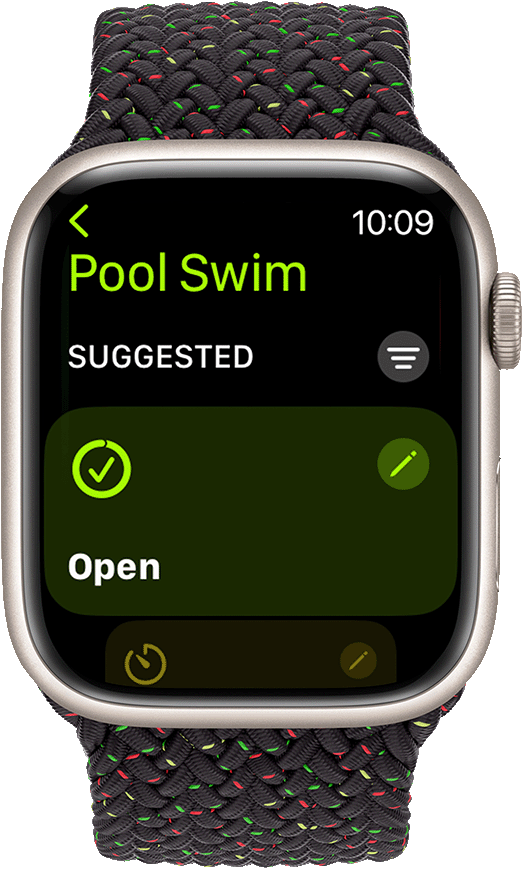
£419 on Amazon
Verdict: Best way to track heart rate when swimming if you are an Apple fan.
7. The Coros Pace 3 Watch
This watch was recently introduced and is very impressive! It has many of the features of a high end watch but for only $219. It has the latest GPS chipset for higher accuracy and quick lock and wrist heart rate sensor with 5 LEDs and 4 photodetectors which means higher accuracy heart rate stats plus the ability to measure your blood oxygen levels.
This advanced wrist based heart rate sensor means that your will be able to see real time heart rate as you swim.
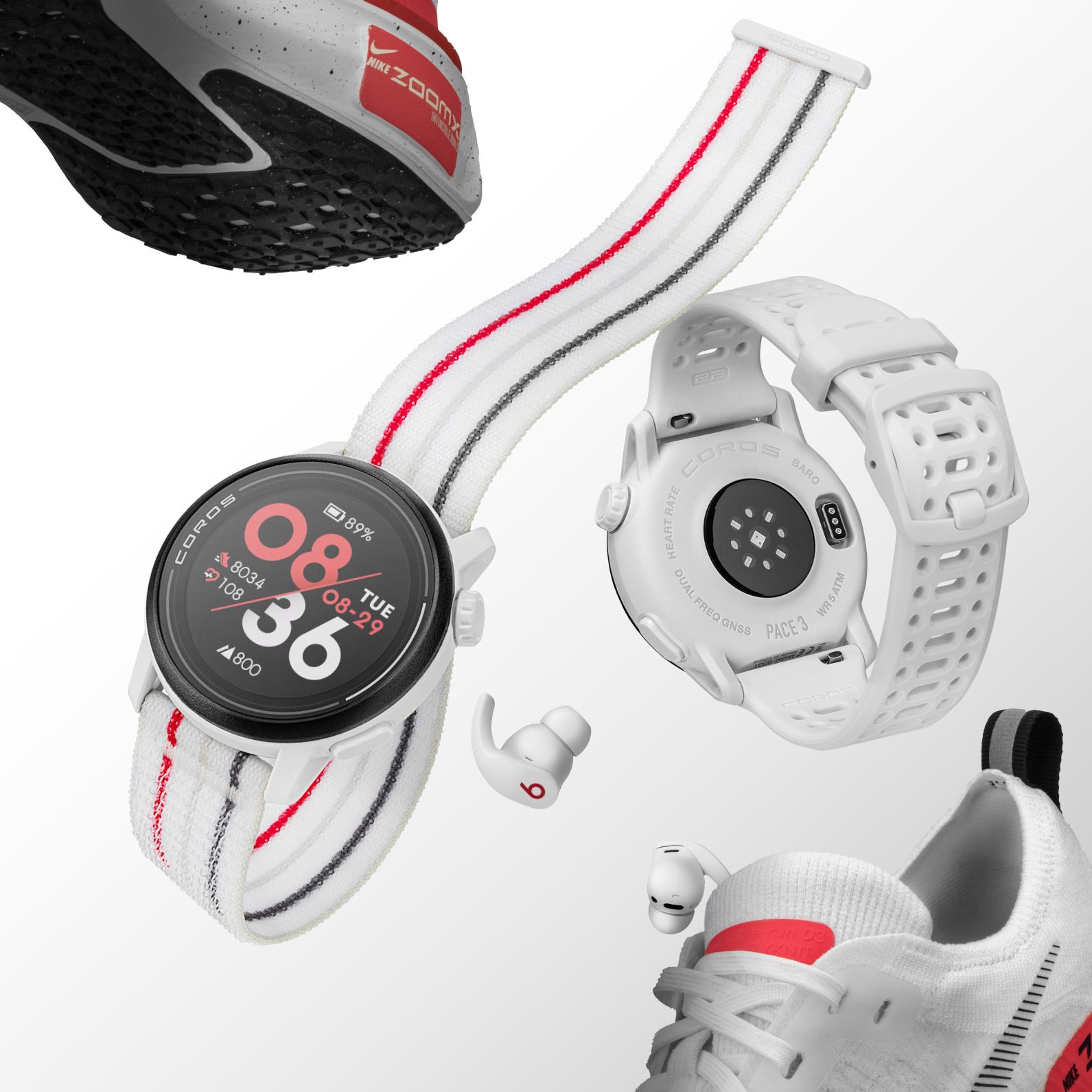
Get your FREE swimming workouts and tips book here.
Get your FREE Open Water Swimming Sessions E-Book
I have tried the Pace 3 in both open water swimming and pool modes and throughout the swim I was able to see my heart rate which helped me swim harder in the right zone on my training plan. In the Coros App you can see your pace, heart rate, stroke rate, water temperature, lap times and in open water your GPS route.
For pool swimming the full stats are: Time of Day, Total Time, Workout Time, Distance, Lengths, Calories, HR, Avg. Strokes/Len, Avg. Pace, Avg. HR, Avg. Stroke Rate, Avg. SWOLF, Last Length Strokes, Last Length Pace, Last Length HR, Last Length Strokes Rate, Last Length SWOLF, Lap Time, Lap Distance, Lap Strokes, Lap Pace, Lap HR, Lap Stroke Rate, Lap SWOLF, Battery, Last Lap Time, Last Lap Pace, Last Lap HR, Temperature.
Coros watches support and automatically detect 4 major stroke types in Pool Swim mode including Freestyle, Breaststroke, Backstroke and Butterfly.
Swimming drills are not currently supported yet but Coros are good at updates so should add this soon.
This watch is not limited to swim performance but is excellent for cycling, running, trail running, gym workouts and more. It is very lightweight and has a best in class battery life. Battery life is an area that Coros watches excel and the Pace 3 no exception with an impressive 25 hours with all systems active and 38 hours in standard GPS mode which is long enough for an Ultra event. In regular use is will lats 24 days. I charged the watch when I got it and even though I did not time it, it was a lot quicker than my Garmin.
The Pace 3 has both Bluetooth and WiFi so you can connect accessories and upload completed workouts over WiFi direct without the need to connect to a phone or PC.
It has a touchscreen but also a jog wheel so you can always navigate the screens in and out of the water.
You can read more about all of the features in my Pace 3 review.
Pros
Large touchscreen display so it’s easy to see displayed data plus navigate the screens. There is also a jog wheel for navigation in the water.
Highly customisable so you can ensure swim stats are shown as you swim.
It is packed with other sports and health features like Blood Oxy and sleep.
You can see your real time heart rate during pool and open water swims.
It is great value for money considering the features it has which are usually seen on top of the range watches.
Cons
It's hard to list any cons apart from if you have invested in the Garmin, Polar or Apple eco system you may want to stick with these brands but if you want the best watch for swimming then this is worth a look.
Conclusion: The Best Heart Rate Monitors for Swimming
Monitoring and tracking your heart rate while swimming is one of the best ways to get more from your time in the pool. Fortunately, many device manufacturers have cracked how to record, store and view your stats during and after your swim.
Waterproof heart rate sensors provide real-time feedback, enabling you to gauge your exertion levels accurately. This feedback helps you determine if you're pushing too hard or not pushing hard enough, allowing you to target those optimal heart rate zones that bring you closer to achieving your goals in the water.
Polar have a long history of accurate heart rate monitors and have a solution for every swimmer’s preference. The Polar Verity Sense mounted on your temple using a specific clip for your goggles can be used standalone so you can view you HR after your swim. Or you can use with FORM goggles and view your HR during your swim.
The Polar Vantage 2 is an excellent choice for a wrist-based device, and you can view your HR during and after your swim.
If you prefer a chest strap the Polar H10 is a solid choice for swimming and other sports. When paired with a Polar watch with Gymlink capability you can see your HR during your swim.
For Apple fans then the Apple Watch Series 8 is a good choice for accurate heart rate tracking whilst swimming. The screen is large and bright so you can view your HR easily in the pool or in open water through wet goggles.
The Garmin Swim 2 Smart Watch has been designed specifically for swimmers and has many dedicated features like stroke rate, CSS, pacing alerts etc which makes it a capable swimmers watch at a good price. For multi-sport athletes and triathletes, you may want more functionality.
For open water swimming the Garmin HRM-Pro Plus is an open for measuring your heart rate for analysis after your swim.
The best swimming watch for showing real time heart rate in open water and pool swimming is the Coros Pace 3. Also if you are a triathlete as well as swimmer your should take a look at this inexpensive feature packed watch.
Ultimately, a waterproof heart rate monitor serves as a valuable tool for your progression and improvement in the water. It empowers you to make informed decisions about your workouts, ensuring you choose the right sensor that aligns with your budget and swimming needs. With the right heart rate monitor, you can elevate your pool workouts to a whole new level and unlock your swimming potential.
At the end of the day, a waterproof heart rate monitor is a tool for helping you progress and improve in the water.
Choose the right sensor for you, your budget, and your swimming, and take your workouts in the pool to the next level.
Karen Parnell is a Level 3 British Triathlon and IRONMAN Certified Coach, 8020 Endurance Certified Coach, WOWSA Level 3 open water swimming coach and NASM Personal Trainer and Sports Technology Writer.
Karen has recently completed a postgraduate MSc in Sports Performance Coaching at the University of Stirling.
Need a training plan? I have plans on TrainingPeaks and FinalSurge:
I also coach a very small number of athletes one to one for all triathlon and multi-sport distances, open water swimming events and running races, email me for details and availability. Karen.parnell@chilitri.com
Get your FREE Guide to Running Speed and Technique
Get your FREE Swim Workouts for Triathletes E-book
Get your FREE Open Water Swimming Sessions E-Book
Get your FREE 31 Structures Indoor Cycling Training Sessions and Training Plan
Summary of Heart Rate Monitors and Devices for Swimming
| Device | Record and view later | View HR during swim | Body Position | Rating for Swimming | Price |
| Polar Verity Sense | Yes | Yes – with FORM smart goggles | Arm and Goggle strap (temple) | 8/10 (with FORM goggles) | £70.48 |
| Garmin HRM-Pro Plus | Yes | No | Chest under wetsuit | 6 | £85.99 |
| Polar Vantage V2 | Yes | Yes | Wrist | 8 | £345.55 |
| Polar H10 | Yes | No | Chest | 6 | £79.99 |
| Garmin Swim 2 Smart Watch | Yes | Yes | Wrist | 7 | £212.99 |
| Apple Series 8 Smartwatch | Yes | Yes | Wrist | 8 | £419.00 |
| Coros Pace 3 Smart Watch | Yes | Yes | Wrist | 9 | £219.00 |

Summary Table: Best Heat Rate Monitors for Swimmers
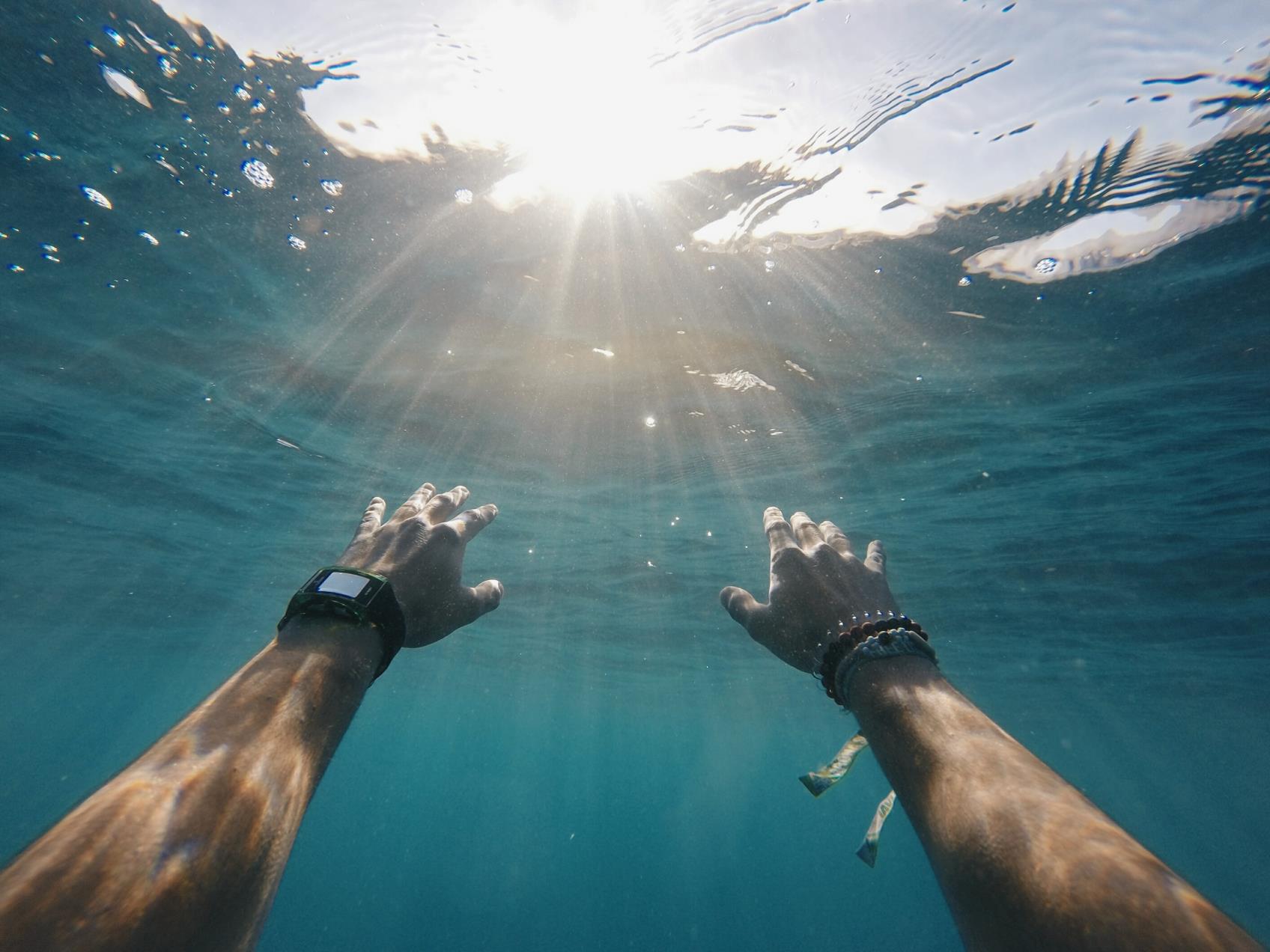
Photo by Cristian Palmer
FAQ: Swimming Heart Rate Monitoring and Recording
What are swimming heart rate monitors?
Swimming heart rate monitors are devices designed to track your heart rate while swimming, providing valuable feedback on your exertion levels and helping you optimize your performance in the water.
What are the different types of swimming heart rate monitors?
There are primarily two types of swimming heart rate monitors: chest strap monitors and wrist-based monitors. Chest strap monitors consist of a strap worn around the chest, while wrist-based monitors are worn on the wrist like a watch. Both types use different technologies to measure heart rate.
Why is choosing a swimming heart rate monitor not that easy?
Selecting a swimming heart rate monitor can be challenging due to a few factors. Firstly, not all heart rate monitors are designed for swimming, so it's crucial to choose one specifically built for water activities. Secondly, water can interfere with wireless signals, making it important to find a monitor that can maintain a reliable connection underwater. Lastly, individual preferences, such as comfort, accuracy, and compatibility with other devices, should be taken into account.
Which type of swimming heart rate monitor is more accurate?
Both chest strap and wrist-based monitors can provide accurate heart rate measurements. Chest strap monitors are generally considered more accurate due to their proximity to the heart, but wrist-based monitors have significantly improved in accuracy over the years.
Are swimming heart rate monitors waterproof?
Not all heart rate monitors are waterproof. It's essential to check the manufacturer's specifications to ensure that the monitor is specifically designed for swimming and has an appropriate level of water resistance.
Can Bluetooth connectivity be a problem with swimming heart rate monitors?
Yes, water can interfere with Bluetooth signals, potentially affecting the reliability of data transmission. However, many swimming heart rate monitors use Bluetooth Low Energy (BLE) technology, which is more resistant to water interference. It's still advisable to keep the monitor and the paired device in close proximity to maintain a stable connection.
Can swimming heart rate monitors track other swimming metrics?
Some advanced swimming heart rate monitors can track additional metrics like stroke count, swim efficiency, and lap times. These monitors often integrate with compatible swimming apps or devices to provide comprehensive swimming data analysis.
Are there any limitations to measuring heart rate in the water?
Yes, there can be some limitations to measuring heart rate in the water. Factors like water temperature, body position, and stroke technique can affect the accuracy of heart rate measurements. Additionally, excessive motion or turbulent water can interfere with the monitor's readings.
Can heart rate monitors be used for open water swimming?
Yes, heart rate monitors can be used for open water swimming as long as they are designed for water activities and offer sufficient water resistance. However, GPS-based monitors may provide more accurate distance and speed measurements in open water compared to pool swimming.
How can I ensure the accuracy of my heart rate monitor while swimming?
To ensure accuracy, it's important to properly position and secure the heart rate monitor according to the manufacturer's instructions. Ensuring a snug fit and good contact with the skin can improve the accuracy of readings. Additionally, periodically checking the monitor's battery life, firmware updates, and maintaining clean sensor surfaces can help maintain accuracy.
Can heart rate monitors help with improving swimming performance?
Yes, heart rate monitors can be valuable tools for improving swimming performance. They provide real-time feedback on exertion levels, helping swimmers optimize their training intensity. Heart rate data can be used to establish training zones, monitor progress, and make adjustments to training routines to enhance endurance and efficiency.
Can heart rate monitors be used for tracking recovery during swimming?
Yes, heart rate monitors can be used to track recovery during swimming. Monitoring heart rate during rest intervals between sets or after intense efforts can provide insights into how quickly your heart rate returns to a baseline level, indicating your recovery status.
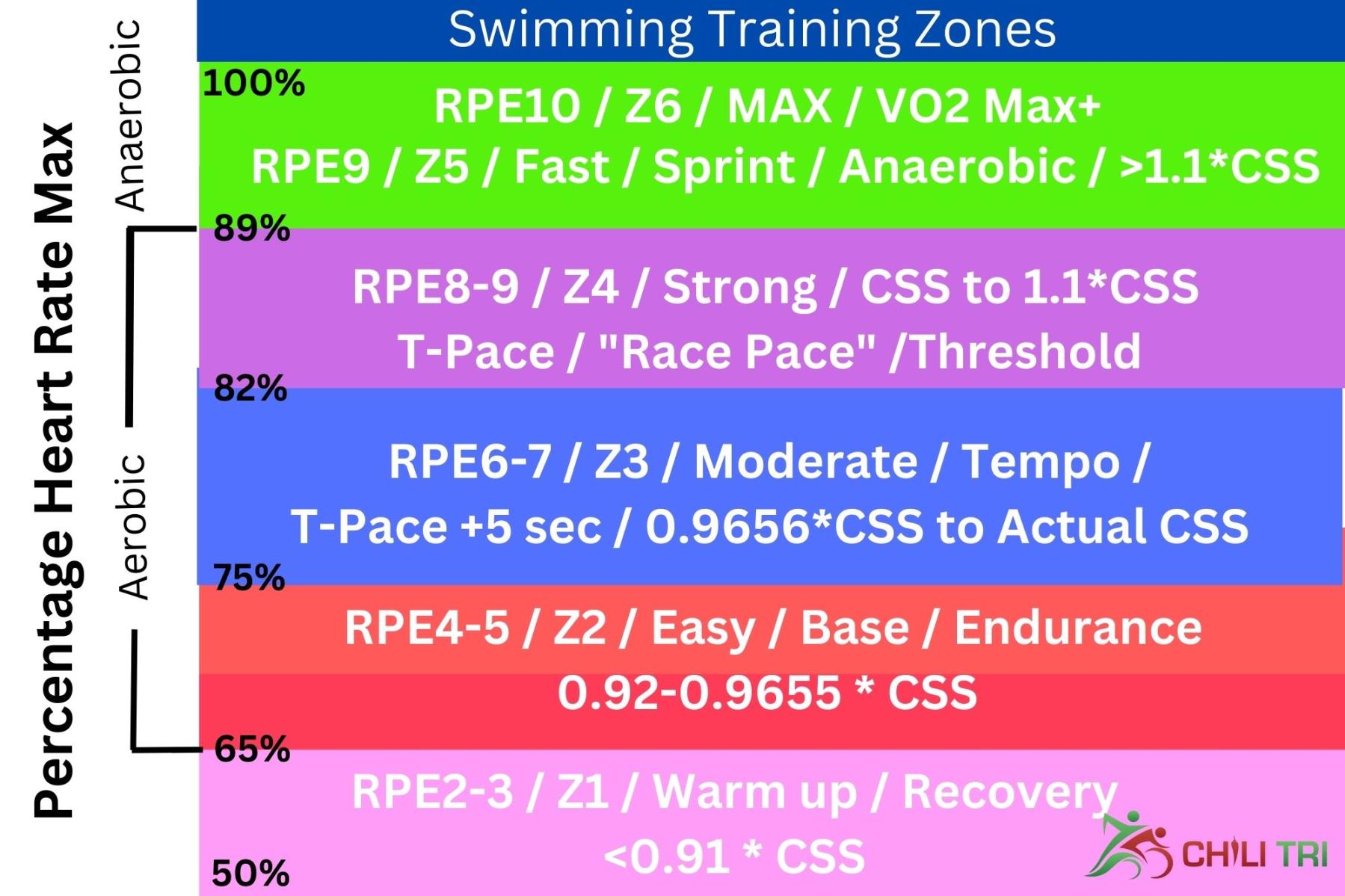
Swimming Training Zones - RPE, HR and CSS
References
https://www.dcrainmaker.com/2011/07/finis-aquapulse-in-depth-review.html
https://www.yourswimlog.com/best-waterproof-heart-rate-monitors-for-swimming/
https://thegearlife.com/heart-rate-monitor/garmin-hrm-tri/
#swimming #triathlon #heartrate #polar #garmin #applewatch #polarh10 #garminswim #swimmingtrainingplans #triathlontrainingplans
This website uses affiliate links which may earn a commission at no additional cost to you. As an Amazon Associate I earn from qualifying purchases. which may cover part of a cup of coffee for me to fuel my training.
